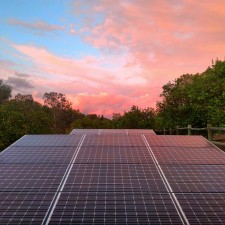Federal solar tax credit sunsets in 2020

IRVINE, Calif., December 13, 2019 (Newswire.com) - One of the most significant pieces of legislation that has helped advance the deployment of both residential and commercial solar across the United States is the solar investment tax credit. Established by Congress in 2006, the investment tax credit (ITC) grants a 30 percent federal tax credit for the installation of a solar power system on residential and commercial properties.
A tax credit is a dollar-for-dollar reduction of the income tax you owe. For example, if you owe $1,000 in federal taxes but are eligible for a $1,000 tax credit, your net liability drops to zero. Tax credits are generally designed to encourage or reward certain types of behavior that are considered beneficial to the economy, the environment or to further any other purpose the government deems important. When you purchase a solar power system, you can claim a tax credit equal to a percentage of the cost of the project outlined by the program. This is 30 percent through Dec. 31, 2019.
Since the tax credit was implemented in 2006, two years after the founding of local solar firm Sullivan Solar Power, the solar industry has grown by more than 10,000 percent, with an average growth rate of 52 percent each year according to the Solar Energy Industry Association. The growth of the solar industry in the United States means a win for the local and national economy. It provides a new industry to supply local jobs and greater savings for consumers on electricity, which can be redistributed back into the economy. In addition to positioning the United States as a leader in global technology, investing in solar power grants political independence from foreign fossil-fuel producing countries and perhaps most importantly, promotes the development of an energy source that reduces our carbon footprint and does not contribute to climate change while powering our needs.
The solar ITC was set to expire in 2016, however, Congress passed the Omnibus Appropriations Bill which garnered bipartisan support in part because it also lifted a ban on fossil fuel exports. The legislation extended the tax credit in full through the year 2019, with a step-down clause to commence from 2020-2022.
The step-down clause is as follows:
2020 - 26 percent for residential and commercial
2021 - 22 percent for residential and commercial
2022 - 10 percent commercial only
There is no better time to go solar than today, when Americans can take advantage of the federal tax credit to help pay for a solar power system which will reduce or eliminate their electric bill. Southern Californians pay a premium for energy, Southern California Edison and San Diego Gas & Electric often fall within the top 10 most expensive utilities in the United States. A typical Southern California family can pay off their system within an average of five years, equaling savings of over 80,000 dollars within 20 years.
Source: Sullivan Solar Power